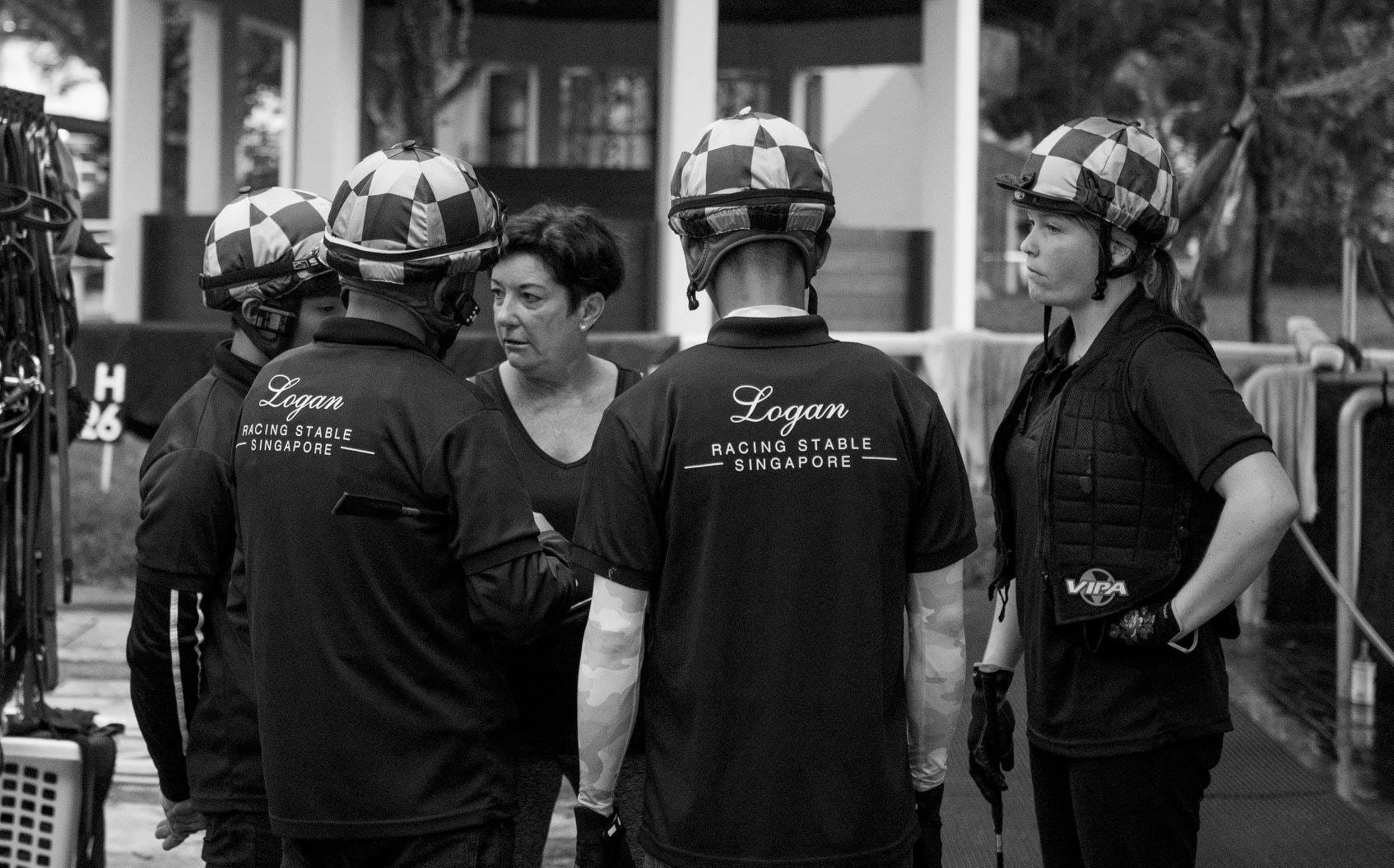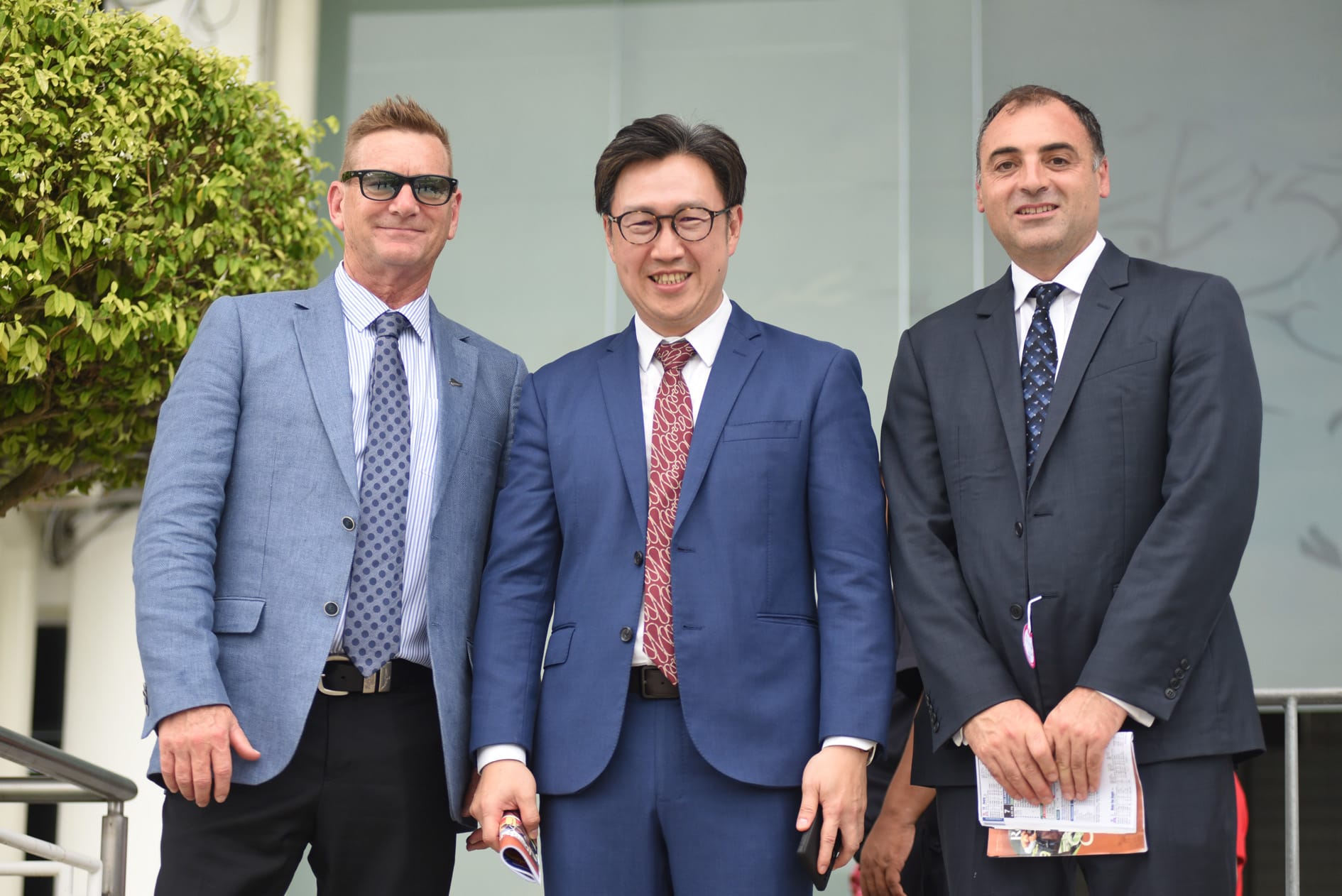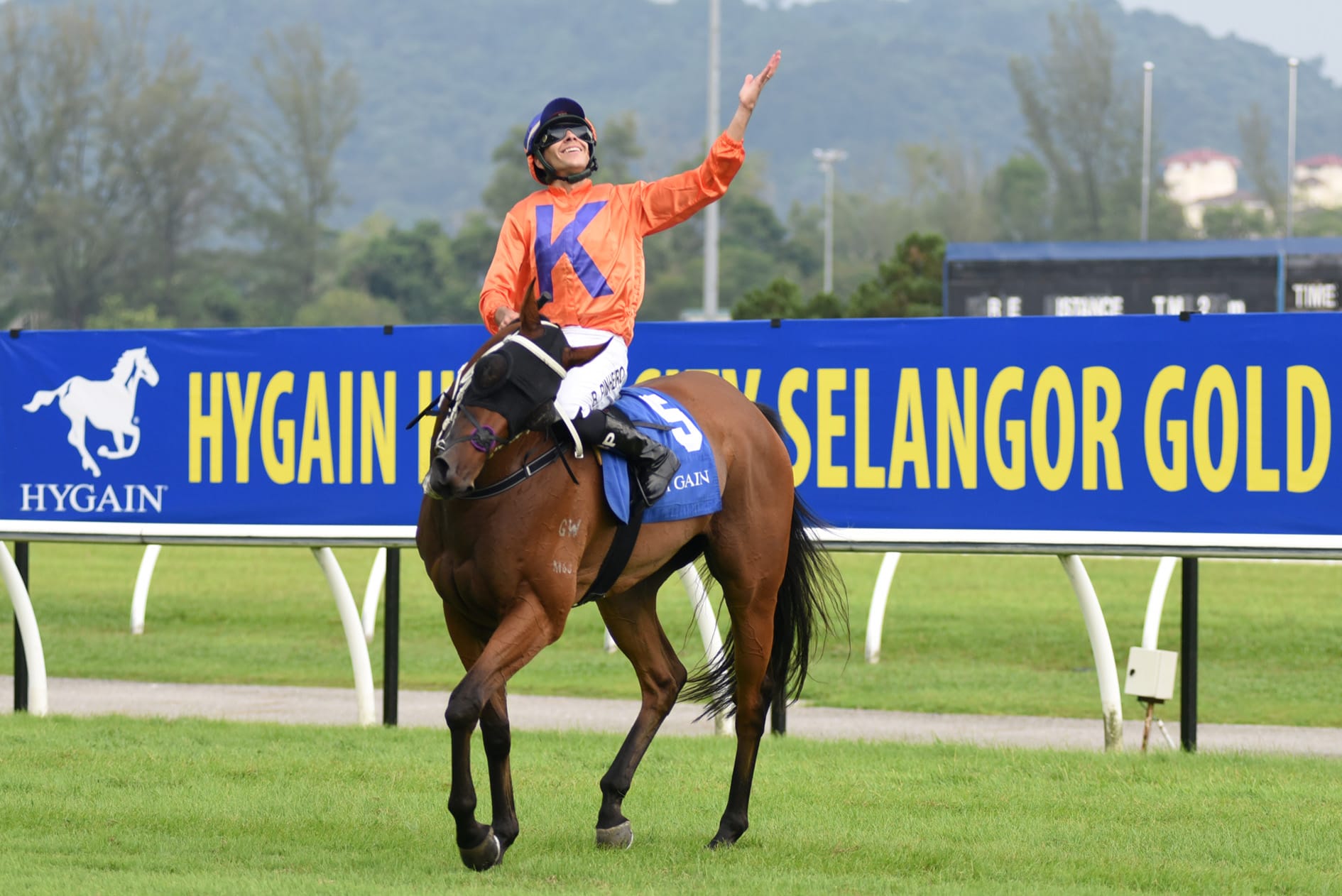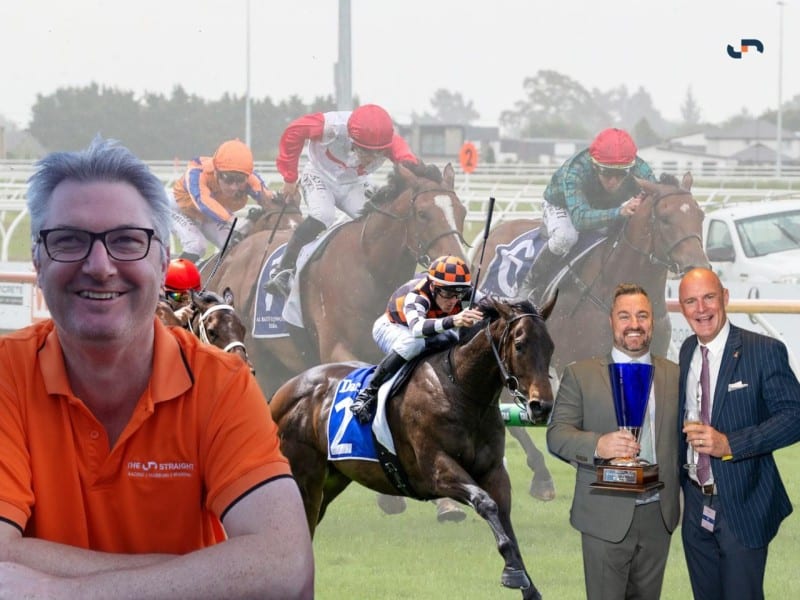As Singapore exits, is Malaysia ready to step up as South East Asia’s next racing frontier?
With Singapore racing’s swansong this Saturday, Tim Rowe explores what’s next for racing in South East Asia and how the thoroughbred industry in Malaysia is best-placed to take up the mantle left by the demise of Kranji.

Racing in the Lion City had been on the slide for the best part of a decade, with prize money cut and the number of meetings slashed.
Big-name trainers, the Lee Freedmans and Cliff Browns, bailed on Singapore years ago in frustration as it became increasingly apparent the industry was incapable of returning to halcyon days of the early to mid-2000s.
The Covid pandemic exacerbated the glaring issues that had besieged the Singapore Turf Club, many of which had been brought upon itself through management and unsupportive politicians.
The Singaporean government’s coffers, which were once reliant on the taxes generated from wagering on racing, were comparatively dwarfed by the revenue generated from casino gambling almost immediately the first blackjack, roulette, and baccarat tables were opened in 2010.
The wider positive economic impact of racing in Singapore was, to the government’s elected officials, largely invisible. Turf club management didn’t go out of its way to make politicians aware of the industry’s contribution to the city state.
So, after 182 years, racing in Singapore – first in Farrer Park, then Bukit Timah and, for the past quarter of a century, at Kranji – will come to an end with the 100th and final running of the Singapore Gold Cup this Saturday.
The 16 trainers who have stayed the course for the past 16 months (the government brutally called an end to racing on June 5 last year) will put their last remaining horses back in their boxes on Saturday night in the knowledge they will either be retired or race on elsewhere and that they too must leave Singapore if they wish to continue their careers.
Expatriate trainer Stephen Gray relocated home to New Zealand earlier this year, fellow Kiwi Donna Logan will do the same later this month and Australians Dan Meagher (Pakenham) and Tim Fitzsimmons (Bendigo) have chosen to set up in Victoria.

For others, including last year’s champion Singapore trainer Jason Ong and Kranji rivals Richard Lim, Jerome Tan, David Kok and Mahadi Taib, nearby Malaysia is where they will move their stables to in the hope of saluting the judge in the years to come.
Other Asian racing jurisdictions weren’t realistic options and Hong Kong was out of reach for the displaced trainers.
There are separate entities who have publicly stated their intent to make large-scale investments in the Thailand racing industry and it has also long been mooted that there are groups wanting to get racing in Vietnam off the ground, but it could be years before anything eventuates in either country, if it does at all.
The Philippines is close to finishing the construction of a state-of-the-art racecourse facility near Manila, which could take the sport into the mainstream, but it is Malaysia that already has an established industry with the associated infrastructure and international wagering agreements to support its racing product.
Selangor Turf Club, based in the Malaysian capital of Kuala Lumpur, is the premier club in the country, staging 53 race meetings this year, while the Perak Turf Club at Ipoh also has 21 meetings scheduled in 2024 on alternative weekend dates.
Penang, a once thriving racing venue in Malaysia, also has 13 meetings scheduled this year, but the turf club is on the verge of closure.
With an influx of horses, trainers, jockeys and gamblers, the pressure is on for racing in Malaysia – and principally Selangor – to go from an international racing backwater to what it has the potential to become: a true destination racing jurisdiction that’s desired by participants and popular with punters and tourists.
For that to happen, prize money increases are imperative and Selangor Turf Club chief executive Dato Michael Fong is acutely aware of the pressure on his club to deliver on those promises for the good of the industry.

Earlier this year, Selangor released a document called the Racing Enhancement Fund (REF), a 29-page dossier outlining the Turf Club’s plans to increase prize money and the overall appeal of its racing from January 1 next year.
It proposes to boost prize money from 17.3 million ringgit (A$6.06 million) this year to 31 million ringgit (A$10.86 million) during phase one early next year and a further increase during phase two later in 2025 to 38.5 million ringgit (A$13.48 million).
The baseline prize money will be increased for Selangor’s staple races, from 30,000 ringgit (A$10,509) to about 57,000 ringgit (A$19,968) after phase two is implemented, but Fong and his board also have ambitions to significantly increase the purses for their premier races, including conducting a 1 million ringgit (A$350,415) feature event.
“We are proposing a four-year-old race over a mile, perhaps, pending the committee’s approval, but nothing is set in stone yet,” Fong tells The Straight.
Malaysia, as with other horse racing nations where gambling is permitted, the level of prize money available for owners, trainers and jockeys is largely dictated by the amount of revenue generated from the betting on its races.
In the absence of Singapore, Fong forecasts an increase of at least 30 per cent more turnover through the Singapore and Malaysia parimutuel betting pools on Selangor fixtures.
“And, to be frank, we are already experiencing quite healthy increases with our betting turnover, even before Singapore goes, especially from Australia and North America,” Fong says.
“Even people from TAB have told me that their punters are quite comfortable with our races, so that is a plus point (for our industry).”
According to Fong, Australian punters are betting on average $1 million per Selangor meeting through Tabcorp’s three parimutuel pools and TAB fixed odds markets.
The $1 million figure does not include what corporate bookmakers such as Bet365 and Ladbrokes are also holding on meetings beamed into living rooms, pubs and clubs and via phones around Australia each weekend.

New Zealand’s TAB, which is run by Entain, has also recently started betting on the Sky Racing-broadcast cards from Selangor while an agreement with South Africa started in August.
To accommodate the additional Singapore-based trainers and their horses, and the others distributed to other trainers, Selangor Turf Club has built extra boxes and increased capacity from about 780 to 900 over the past year.
There are about 300 horses still based at Kranji, with 250 bound for Malaysia after Saturday’s race meeting, the majority of which will find their way to Selangor.
That sudden intake of horses into Malaysia could have a short-term effect on the demand for horses at the upcoming two-year-old sales conducted by Inglis, Magic Millions and New Zealand Bloodstock.
However, Magic Millions’ international sales director David Chester, who has been working the Malaysia market for decades, is hopeful that the country’s racing administrators can take the industry forward.
“We badly need Malaysia to hit its straps and start progressing more than it has for the past 30 or 40 years because, without Singapore and Macau, it leaves a big hole in our export market,” says Chester, who is currently on another sweeping mission through South East Asia drumming up business for the company’s Horses In Training Sale on October 22.
“The Selangor track is as good as any track in Asia and the facilities there are excellent, but they have one problem: the prize money.
“They have got to do something about the prize money. The Penang Gold Cup used to be worth 1.5 million ringgit and the Selangor Gold Cup used to be worth 1 million ringgit.”
“We badly need Malaysia to hit its straps and start progressing more than it has for the past 30 or 40 years because, without Singapore and Macau, it leaves a big hole in our export market.” – David Chester
Inglis’ James Price, New Zealand Bloodstock’s Mike Kneebone and New Zealand Thoroughbred Marketing’s Andrew Birch have also been to Malaysia in recent months spruiking the merits of their respective sales.
Longer term, without Singapore providing a monthly shipment of tried horses into Malaysia, Australasia’s market, both live and online auctions, will play an increasingly important role in owners and trainers sourcing new stock to race.
Fong, in particular, has been working closely with the three auction houses to facilitate the expected increasing trade of horses into Malaysia.
A drive for excellence is also being implemented at Selangor, with a minimum rating required for a horse to remain in training in Kuala Lumpur, while a cap of 60 horses in work at any one time has been imposed on all licensed trainers based at the capital city track to maintain diversity and ensure competition.
The 2024 Selangor Gold Cup
Expatriate Englishman Richard Lines, a former jockey who rode Furacao to victory in the 1995 Kindergarten Stakes and again in that year’s Golden Slipper when unplaced behind Flying Spur, arrived in Malaysia in 1997 as a track rider.
In the almost three decades since, Lines has become a formidable force in the local training ranks, winning the premiership in 12 of the past 14 seasons.
Lines, 60, believes the next two years are vital to the long-term future of racing in Malaysia if it is to be relevant on the world stage.
“With Singapore and Macau closing, it’s given Malaysian racing a huge boost and now it’s up to the industry to capitalise on it,” Lines said from trackwork at Selangor this week.
“The increased stake-money is essential … to give owners the confidence in our racing to reinvest and then I think the sky’s the limit.
“Owners are investing now in new and young horses for the future, but we’re going to need more down the track.
“For that to happen, you need the right people steering the ship and at Selangor I think we definitely have.”

“The increased stake-money is essential … to give owners the confidence in our racing to reinvest and then I think the sky’s the limit.”
– Richard Lines
Lines is also supportive of the club’s decision to cap stable numbers despite he and 2022’s champion trainer HY Cheng being the most affected by the restriction.
“I don’t think it’s a bad thing, to be fair,” he says.
“It gives everyone an opportunity. I think 60 horses is OK for everyone and, at my age, 60 is plenty anyway.”
Performance criteria will also be used to determine which jockeys are licensed to ride at Selangor, with officials proposing no more than 30 riders will be based out of Kuala Lumpur to ensure they all gain ample opportunities to succeed.
PH Seow, Singapore’s dominant apprentice this year with 20 winners, and senior jockey TH Koh (16 winners in 2024) are joining the Selangor jockey ranks on a permanent basis after Saturday’s Kranji meeting.
Fong is also wary that Malaysian racing administrators don’t make the same mistake as their Singapore counterparts and that they must work hard to ensure the sport remains relevant in the Malaysian community and with the government.
“Of course, when we had Macau close (in March) and with Singapore closing, the government asked, ‘what are you guys going to do?’” he said.
“We showed them the figures, the people who are involved in the industry, the revenue that it brings to the government coffers.
“We have to improve our efforts to increase the betting turnover, enhance owners’ experiences among other initiatives to ensure we don’t have any negative news stories about racing.”
“Of course, when we had Macau close (in March) and with Singapore closing, the government asked, ‘what are you guys going to do?’ – Mike Fong
That’s not to suggest that it’s all smooth sailing in Malaysian racing. One of the country’s three racing clubs, the Penang Turf Club, is likely to be closed and the land sold off for development.
Penang has struggled to attract fields to conduct races with meetings of an unsustainable two and three races conducted on multiple occasions this year.
“Whether they can get it through or not is another question, but the decision has been made that they want to sell, so we have to respect that,” Fong said of Penang.
“We are working very closely with Ipoh. We are encouraging (some of our owners) to send their horses there to race, particularly next year when we introduce the REF restrictions, so some of the lesser performed horses will go there to balance up the (horse) population in Malaysia.”
Fong has been spending a lot of time looking into the future, but just for a day, this Saturday, he will be thinking of the past as one of the thousands of racing fans who will be at Kranji for Singapore’s final meeting where he will “cry for them”.
“We can try to understand why it has happened, but we just don’t know what the real reasons are for this closure,” he says.
“It is still shocking. You look at their racing, you look at their betting turnover and it just doesn’t make sense.
“I hope all the employees from the club and stables, and all the horses will have a smooth transition after the Singapore Turf Club hosts its final meeting on Saturday”






